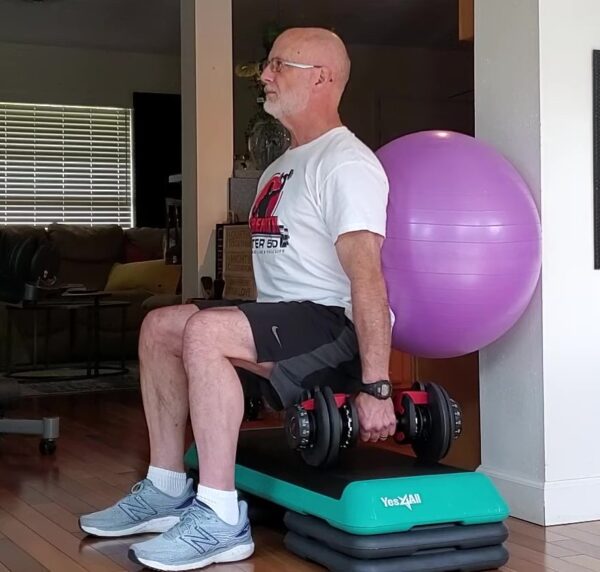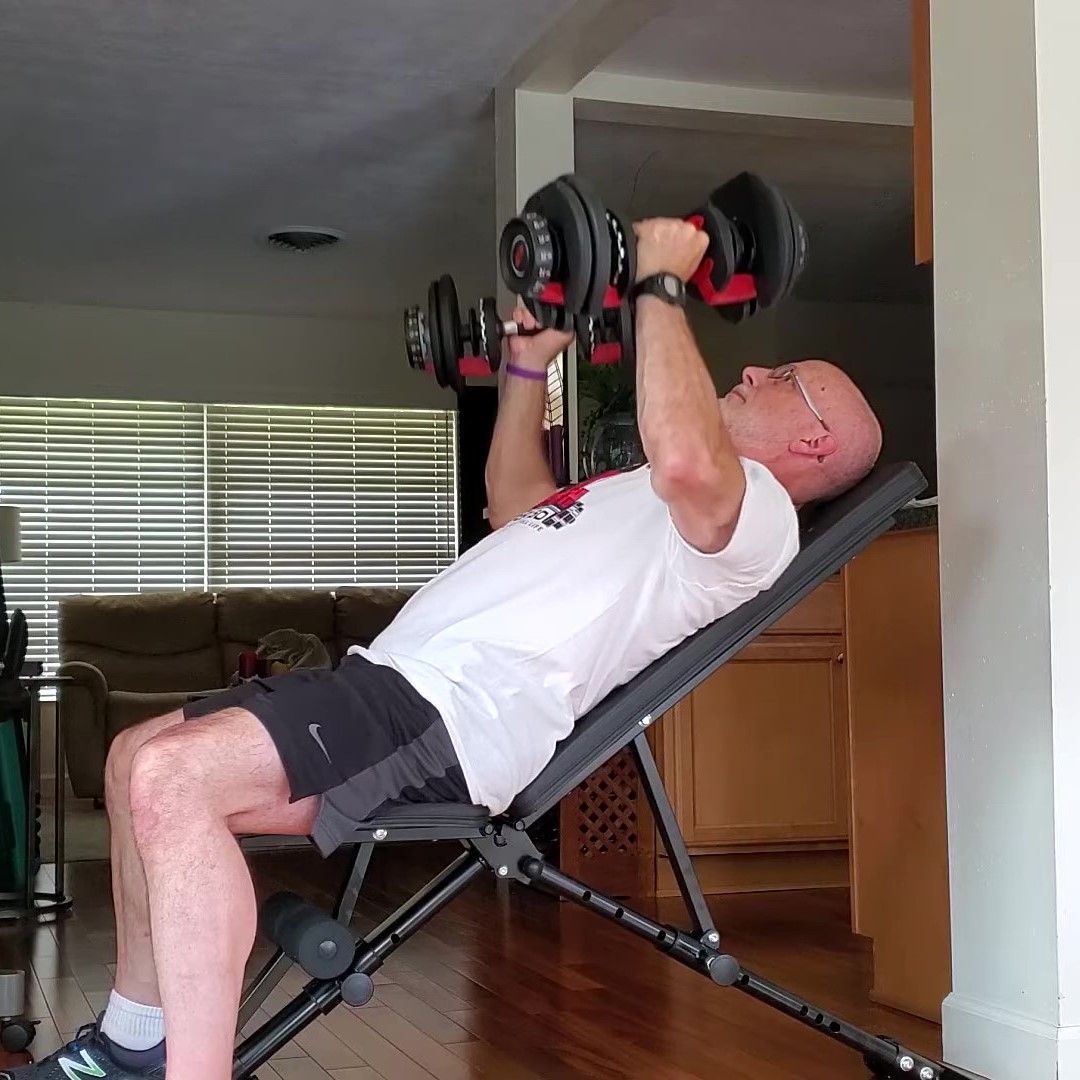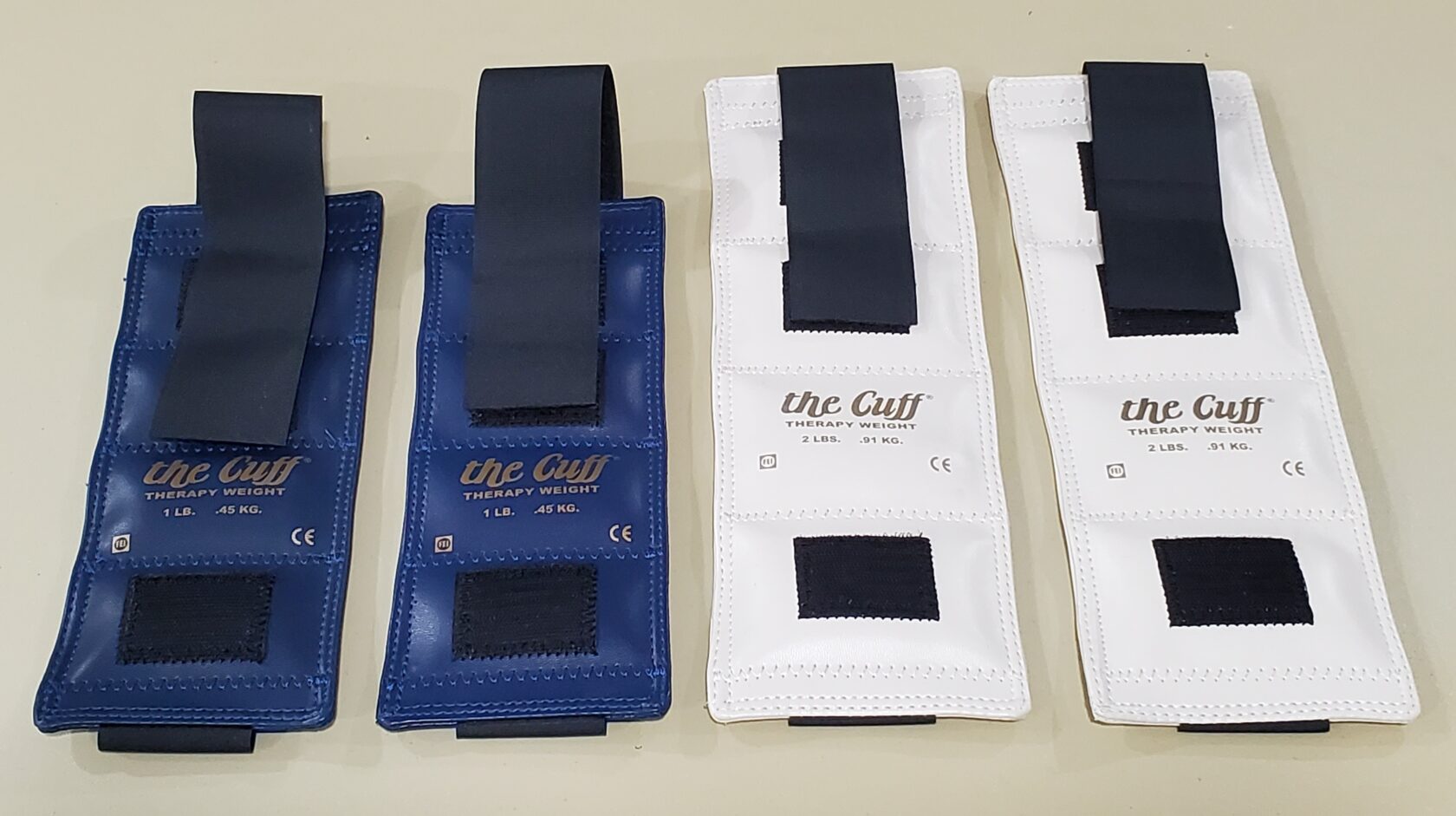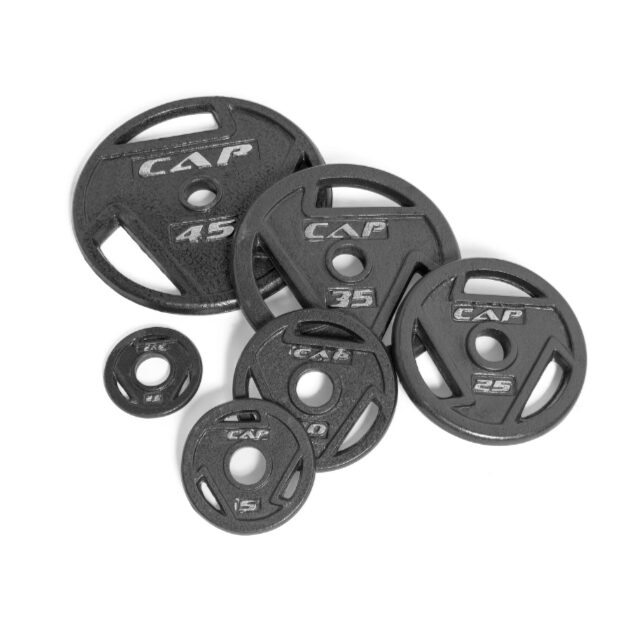9 Home gym essentials on a budget
Introduction
If you don’t have access to a well-equipped gym, a home gym is a good investment. While equipment matters, you can get great strength and muscle-building workouts in the privacy of your own home with these 9 home gym essentials, on a budget that won’t break the bank.
Progressive resistance is required for continued strength gains, so to build strength and muscle at any age, you need a way to make your workouts progressively harder.
You’ll also need ways to target specific muscle groups by utilizing equipment that allows you to perform seated or supine exercises safely and comfortably.
That being said, you don’t need to let a lack of expensive exercise equipment in the gym stand in your way of getting started on a workout program.
In this post, we’ll cover the basic equipment you’ll need to get stronger at home, why each piece is important, and recommendations with links based on brands I have personally used. (Links are in red.)
The List:
#1. Adjustable dumbbells
This will be your most important, and most costly expenditure. You must have a source of progressive resistance for your exercise routine to build muscle and strength – bodyweight exercises alone won’t do it.
Adjustable dumbbells are perfect for a home gym because they only take up the space of 1 set of dumbbells, but the resistance can be progressed from 5 pounds to 52.5 pounds. The Bowflex SelectTech 552 is the set I have used with good results. You just twist the dial on each end to select the weight you want, lift the handle and you’re ready to train.
#2. Dumbbell stand
You could probably live without this one if you had to, but your back will thank you many times over the long haul if you get it, because it will save you from having to lift your dumbbells off the floor all the time. If you have the space and are committed to your strength training program, you’ll definitely want this stand for your adjustable dumbbells.
#3. Workout bench
An adjustable workout bench is a huge addition for a complete home gym. Having one in your compact home gym space will vastly increase the number of exercises you can perform, which will give you more complete muscular development, keep your motivation high, and help keep your workout plan sustainable.
Adjustable means you can alter the angle of the bench to enable you to lay flat, at an incline, or sit upright with full back support.
This one folds up easily for storage, has a 700 pound weight limit, and can also be adjusted into a decline position for advanced abdominal exercises.
#4. Physio-ball/Swiss Ball
The swiss ball will allow you to perform wall squats with the ball behind your low back as your lower body push exercise to strengthen your hips and legs safely and effectively. You can also use it to perform low back extension. They come in different sizes, I recommend the 55 cm ball.
CAUTION: do not sit or lay down on the swiss ball for upper body exercises, that’s very dangerous!
#5. Pull up bar
A sturdy doorway pull up bar lets you strength train your back, shoulders and biceps by doing pull ups with various grips. I recommend either an underhand (palms facing you) grip, or a parallel (palms facing each other) grip.
This type can also be removed from the doorway easily and used as push up bars – much more comfortable on the wrists when doing pushups.
#6. Fitness step
Fitness steps were popularized in the 1980’s when group “step classes” were all the rage. You want one that has a couple of removable risers so you can alter the height of the step, and you also want to make sure you get the “health club size”, which is 42.5 inches long, rather than the regular size which is only 29 inches long. (Here’s the one I have). This extra length will give you much more versatility.
The step is useful for leg strengthening exercises such as the wall squat with swiss ball described above – notice in the picture of the wall squat I have the step under me to lift the weights from comfortably, and I can simply place them on the step when I’m done, which keeps things safe.
The step can also be used for calf raises, either with both feet for beginners, or one leg at a time while holding a dumbbell for more advanced trainees.
#7. Floor mat
A padded floor mat will allow you to perform various abdominal exercises comfortably. One like this will work great.
In my workout programs, a floor mat will be essential for your lumbar stabilization exercises, and you can also do your static neck flexion, shoulder external rotation, and hip stretches on it.
If you have a compact home gym space, these mats can be rolled up and put away in between workouts.
#8. Wrist/Ankle weights
Wrist/Ankle weights are flat cloth or vinyl covered weights that attach to your wrists or ankles with a Velcro strap. They can be used to progress your weights when using adjustable dumbbells in smaller increments than the pre-set dumbbell weights allow. You can also use them to progress body weight exercises, like the reverse crunches pictured above.
If your budget only allows you to get one set of wrist weights, I recommend 2.5 pounds (and make sure you get two). If you have a little more to spend, I’d say get two 1-pounders and two 2-pounders; that way you can go up in 1, 2 or 3 pound increments.
#9. Free weight plates
Remember I said earlier that a requirement for building muscle through strength training is progressive resistance. You can’t do the exact same exercises in the exact same way over and over and expect to gain muscle and strength. You have to challenge your muscles and continuously be striving to do more reps, more weight, or both on every exercise in your strength training routine.
An easy way to do that on some exercises, such as floor crunches and back extensions, is to add resistance using small free weight plates. Starting your collection with a 2 1/2, a 5, and a 10 pound pound plate will hold you over for a while. By holding more than one plate at once, you can add 7 1/2, 12 1/2, 15, or 17 1/2 pounds to the exercise.
Conclusion – 9 home gym essentials on a budget
So there you have it – 9 home gym essentials on a budget that can get help you stay strong, rebuild yourself and live a full, active life after 50. If you’re just starting out, start at the beginning of the list and add items as your budget allows.
You can get stronger training at home, you just need figure out the best home exercise equipment for your budget, and get on the right home workout program.
Thoughts or questions on equipment for home gym workouts? Leave a comment below!
Related Content on home gym training to achieve fitness over 50:











6 Comments. Leave new
I have been looking for just this type of information. Do you have a version of your program for people using the equipment mentioned in the post vs regular gym gear?
Hi Peter, yes I do have a home workout version of my program, you can learn more here
Hi Dave, The information here is tremendous. Many thanks. I have been training at home for several years, and staying in reasonable shape. But one thing I never manage to do is go to failure with my up to 70 lbs DBs on big lower body exercises like squats. (Using various techniques to ‘make the weight heavier’ I can exhaust my system, but not my leg muscles). So, I am most interested in your use of the Swiss ball for squats. Does this make regular ‘suitcase squats’ much harder? By the way, I really like the use of the step for squats to facilitate picking up and dropping the weights! Thanks, Alan
Hi Alan, glad you are finding the information helpful. Yes, You should find this harder than regular suitcase squats, so you be should be able to cut the weight back a bit and give yourself room to progress on these.
One other suggestion I have to exhaust your leg muscles before your overall system – you might want to experiment with slowing down your rep speed, for example try lowering the weight in 8 seconds and lifting in 4 seconds. After a few reps you should feel an interesting sensation in your leg muscles 😁
Thanks very much, Dave.
8 second negatives on squats – that sounds evil! I’ll give it a go – and get a Swiss ball.
Sounds good Alan! Yeah, those negatives might make you squint a little 😉